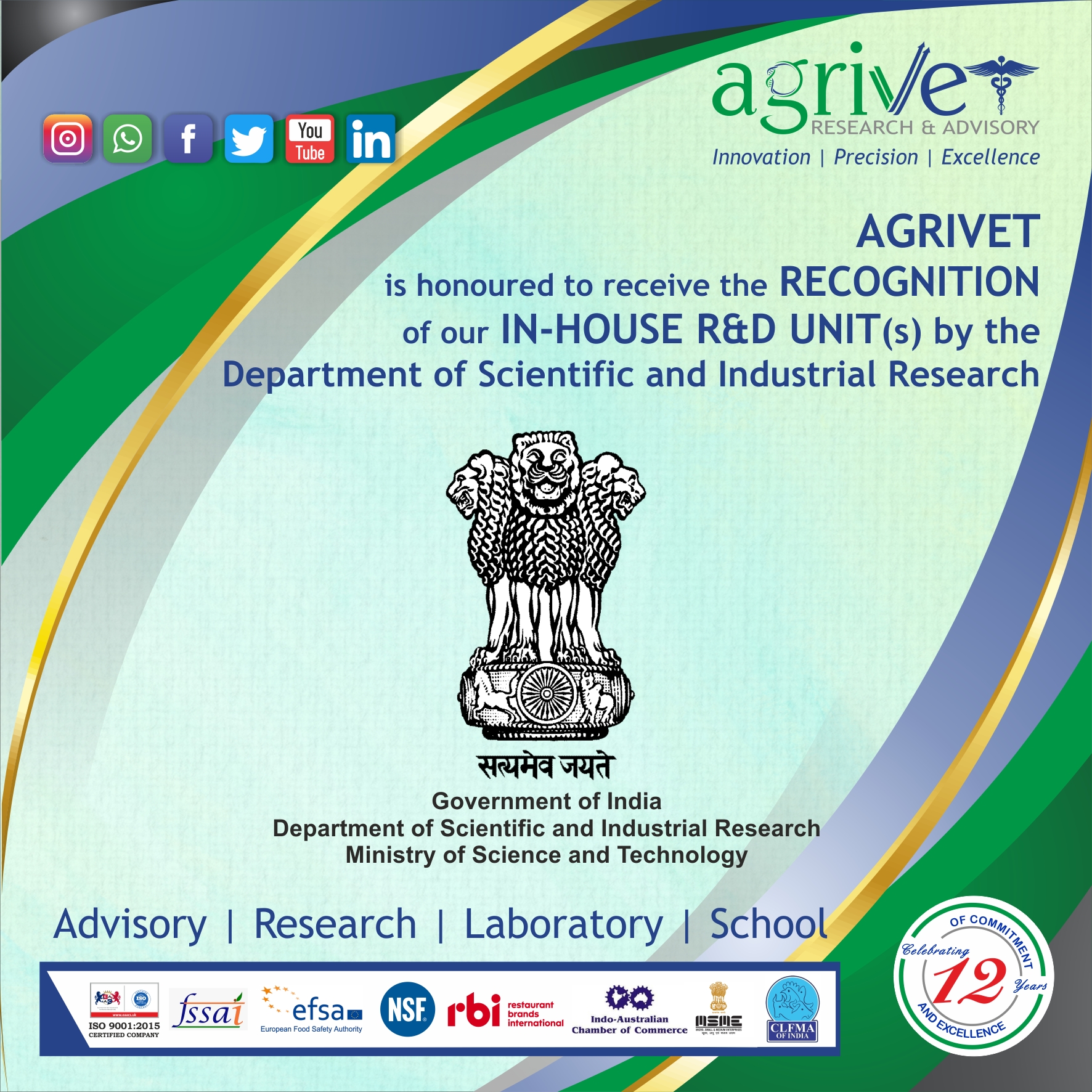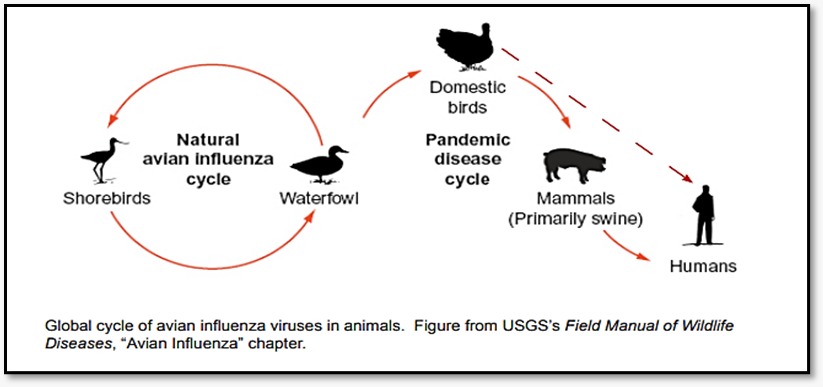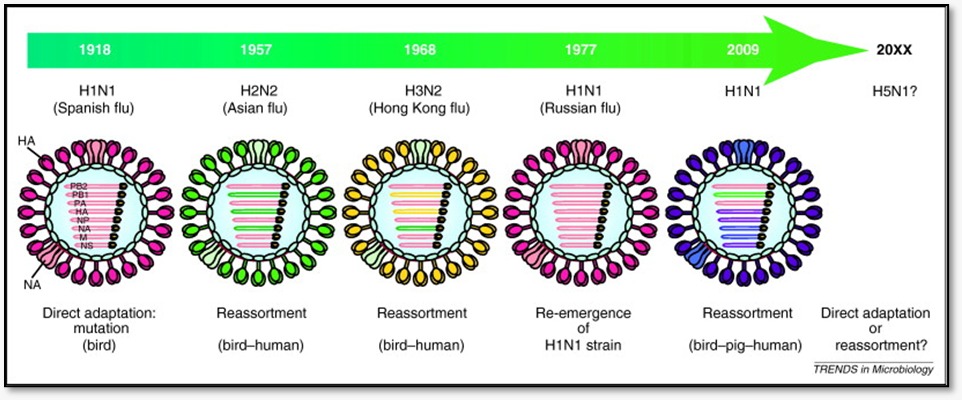
Avian influenzaalso known as bird flu or fowl plague is highly contagious viral disease of birds. It is carried by wild aquatic birds, especially waterfowl, which are not greatly affected by the virus. This disease spreads very fast and can cause huge economical losses in poultry. The losses may be due to culling of birds and hampering or stoppage of international trade of poultry and poultry products which will affect the total economics of the poultry industry.
Avian influenza virus belongs to Orthomyxovirus family which isa single-stranded RNA virus. These are classified intothree types A, Band C, which are differentiated by internal viral proteins. Influenza A is more important for poultry. It is subtyped on basis of viral envelopeglycoprotein hemagglutinin (HA) and Neuraminidase (NA). There are 16 different HA antigens (H1 toH16) and 9 different NA antigens (N1 to N9). Avian Influenza in domestic chicken and turkey are classified according to disease severity as HPAI(Highly Pathogenic Avian Influenza) and LPAI (Low Pathogenic Avian Influenza).

Highly pathogenic avian influenza A virus subtype H5N1 has been endemic in some bird species since its emergence in 1996 and its ecology, genetics, and antigenic properties have continued to evolve. This has allowed diverse virus strains to emerge in endemic areas with altered receptor specificity, including a new H5 sublineage with enhanced binding affinity to the human-type receptor. The pandemic potential of H5N1 viruses is alarming and increasing.

